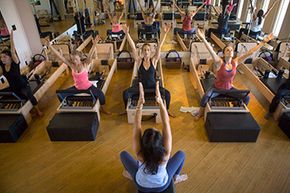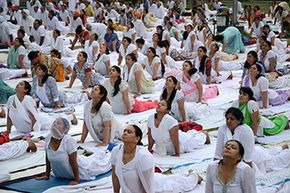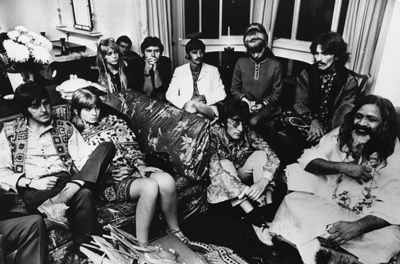If you do aerobics regularly at a gym, your instructor might tell you to also take "a yoga or Pilates class for stretching." After all, both exercises include poses intended to increase flexibility. And both offer a quieter, more relaxing alternative to a step or spin class. But while yoga and Pilates get sometimes lumped together, the two disciplines are quite different.
Yoga is believed to be more than 5,000 years old [source: Eisler]. It started in India, though no one knows who originated the practice. There are dozens of variations, although Hatha yoga is probably the most widely known and practiced version in the Western world today [source: Feuerstein].
Advertisement
On the other hand, Pilates was developed in Germany by Joseph Pilates over a period of years, beginning in the early 1900s. Upon emigrating to the U.S. in the 1920s, Joseph and his wife opened a studio in New York City, which was frequented by a group of devoted followers, including many professional dancers. A couple of students eventually opened up their own studios, and the discipline began to spread across the U.S. and eventually the world [source: Joseph Pilates].
So why do people often confuse yoga and Pilates? Maybe it's because practitioners of both disciplines carry around rolled-up mats and spend time lying on the floor. More seriously, there is some overlap with the poses. Joseph Pilates had studied yoga and incorporated some of the moves into his own exercise routine [source: Hessel]. Another similarity is that both practices emphasize breathing, though in different ways, which we'll discuss later.
A final similarity: Both routines earn accolades from their very vocal celebrity followers. Yoga is the workout of choice for A-listers such as Adam Levine, Madonna, Matthew McConaughey and Woody Harrelson, who particularly appreciates the positive impact of yoga on his sex life [source: McKernan]. And David Beckham, Cameron Diaz and Megan Fox are just a handful of the celebs who swear by the body-changing abilities of Pilates [source: McClain].
Now that we've looked at the parallels, let's see what makes each unique.
Advertisement


